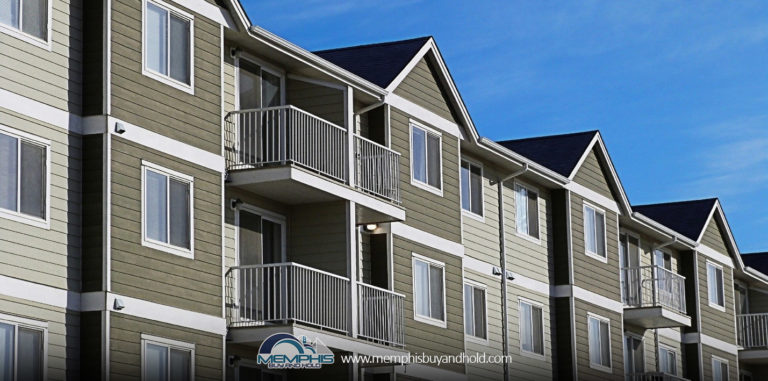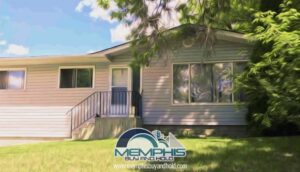
When it comes to residential real estate investing, there’s been some dispute between investors as to why investment property is better – single-family or multi-family homes. The first thing you should understand is that every investor has their own idea of what is better.
Another thing to remember, each investment has some positive aspects as well as some negative ones. What attracts one person to a single-family home may not attract another person to it. What may cause you to walk away from a deal may not be what stops another investor from buying the home.
When you’re a real estate investors, you have to look at the pros and cons of both types of homes. If you’re a newbie investor, single-family homes may be better since the threshold to break into the market is less. As you become more acclimated to the market, you can venture into the multi-family property. If you decide that you like both, you can invest in both types. If you like the idea of a multi-family property better, you can stick with that.
Special Note: There is a vast array of real estate property for you to choose from. If you decide that residential property investment isn’t your thing, consider commercial real estate instead.
A Look At Single-Family Housing
Most people understand what the term single-family properties means: it’s a detached piece of real estate that one family or tenant lives in. These are homes, and as investors, you purchase these homes to either rent them at or lease to a tenant.
The majority of real estate investors start their venture with this kind of property. It’s easier to break into the real estate market with these kinds of homes. It’s important to understand that there are an array of single-family homes that you can invest in including:
- Vacation homes
- Student housing
- Townhouses
A Look At Vacation Homes
A vacation home is centered on luxury. These homes are about giving tourists high-quality living and a lavish experience. Renting these homes is often higher than an actual rental home. They can be rented out by day, week or month – usually depending on the lease structure. Since vacation homes are usually seasonal, there are some challenges that come with it such as maintenance and vacancy.
A Look At Student Housing
Student housing isn’t always tied to a university or college, and non-students are not excluded (thanks to the Fair Housing Act). You do have the option to create a lease agreement that’s based on semester cycle of the college or university close by. The terms tend to be shorter and more money can be made from the short-term lease that may also include summer terms.
Many investors are hesitant to rent to college students, fearing the damage that often comes from big parties and negligence. However, steep fines laid out in the rental agreement for these kinds of behaviors may lessen any problems that investors could suffer with.
In many cases, it’s the parents, not the students, who sign the lease and may decide to pay the entire semester in one lump sum.
A Look At Townhouses
Townhouses are quite interesting, as they’re purchased like a single-family property but are more for multi-families. They often have expensive HOA fees but do offer some common amenities and can provide some extra “insight” into the tenants in the homes. These homes tend to cost less than single-family homes, but it’s the HOA fees that you need to be mindful of. While a worthwhile option, an investor should still be wary of them.
A Look At Condominiums
Condominiums are similar to townhouses in two ways: they often have HOA fees and are purchased as a single-family unit although they are a multi-family property. Condos share walls like apartments, but you purchase one unit and rent it out instead of the entire building (unless you prefer it that way).
Condos can easily be viewed as a vacation property when it comes to marketing rather than a single-family home.
There are many things to consider when it comes to buying a condo. For example, you need to know how well it’s been kept, what the current management is like, how large are its reserve funds, what rules it has in place, what kind of bylaws, etc.
A Look At Multi-Family Properties
The majority of people view multi-family properties as being an apartment. And, for the most part, this is true. People see complexes or high rises when they consider apartments. A real estate investor would purchase the entire complex and rent out each one unit to individuals or families, giving them multiple sources of income.
The main advantage of owning a multi-family property is that it offers more than one source of income. However, it can also reduce the impact of tenant turnover and vacancies.
Similar to single-family properties, there are some variations of multi-family properties to consider:
- Duplexes
- Triplexes
- Quadraplexes
It’s not uncommon for people to be confused by these three options. The key distinction between them is the size of the homes. They can be detached or semi-detached properties that have several multi-family units. These types of properties are typically cheaper than full-sized apartments, making it easier for novice investors to take a chance on,
What Are The Factors Owners Should Consider About The Different Investment Properties
Upfront Cost
When it comes to upfront costs, it’s less expensive to purchase a house than an apartment building. It’s often why investors go with single-family properties to launch a real estate investment career. Nothing is foolproof but, with the right knowledge, they are less likely to be problematic.
It’s easier to save up from this kind of investment property than for a multi-family property. However, multi-family properties far easy to scale per unit, giving you more one source of income from the one buy. If you want multiple income sources from a single-family unit, you have to buy several properties – this takes time and money. However, slowly diversifying your portfolio will lead to long-term success.
Buying/Selling
The reality is that single-family homes tend to be better than multi-family properties because there are always buyers for the market. With multi-family homes, you reduce your investor market to real estate professionals and other investors. With single-family homes, you’ve got casual homeowners (a much bigger pool to choose from).
Some investors say it’s difficult to sell single-family homes, but that’s not individual properties. That’s actually the whole portfolio.
Tenant Turnover
When you rent a single-family home out, people tend to stay there longer than in apartments. According to the National Apartment Association, in 2014, there was a 54 percent turnover rate. In single-family homes, the turnover rate is 25 percent.
Investors can certainly feel the financial pinch when there are vacancies and tenants move in and out in a short time. It’s imperative to reduce that time. While apartments do allow for multiple income streams, frequent vacancies can reduce the impact.
Why are tenants more inclined to single-family rentals? There could be numerous reason for this – work, school, friends, etc. There’s no need to deal with neighbors. They made even feel like it’s a home they can stay in for a long time.
Demand
There is a rising demand for rentals for both single-family and multi-family properties, but the demand is tight for single-family homes due to their desirability. Single-family homes also don’t have the kind of reputation that apartments have.
Rental demand has been steadily rising, with a 59 percent growth in household opting to rent over buying. Investors don’t need to worry about demand terms, as rentals are still an extremely desirable property and are demonstrating no stopping power.
Scalability
The barrier to enter the single-family property is lower, but they are typically harder to scale on a unit-by-unit source. Investors usually need more upfront capital to purchase an apartment complex, but they offer multiple sources of income. If you want more income from single-family properties, you need more than one or two houses to make it happen.
This can amount to a plethora of work. This may be good for a slow-and-steady approach, but scaling it quickly is difficult.
You can also slowly diversify the portfolio to other markets that include single-family homes. While this is a unit-by-unit scaling, the benefit here is with the multi-family property option.
Vacancy and Risk
The biggest problem with single-family rentals is what happens after a tenant vacates the property. When there is no tenant, it means the investor makes no money. A few vacancies in an apartment complex doesn’t bring the cash flow to a halt. There is a bit of room here with these vacancies – not so much with the single-family home property.
The majority of people will try convincing investors that a multi-family investment is the better way to go because they lower the risk. A vacancy isn’t that big of a problem since you still have some income coming in while you look for another tenant.
Of course, this isn’t a problem when you own multiple single-family properties. You can handle vacancies of this nature. Still, this will depend a lot on your portfolio size, personal situation and how well you’ve been able to plan for these vacancies. It’s all about personal risk tolerance.
Management Expense
Property management companies charge a large chunk of rental income for a single-family home compared to apartment units. It’s why many novice investors opt to be a landlord. Single-family homes are usually more expensive to handle.
Financing Limits
You are limited to traditional forms of financing for single-family homes, but that doesn’t mean you can’t get creative. You can also opt for private money lending options. With a traditional financing option, you’ll need to put down between 10 and 20 percent.
When buying a multi-family property, you can purchase private placement offerings or find other financing strategies to buy the property, off the initial financing of and earn income quickly. It all boils down to a financing strategy rather than the kind of property you go with.
Costs For Repair and Maintenance
You have to consider ongoing costs to your property such as wear and tear. In apartments, you have higher tenant turnover rates, and you’ll have to make repairs and replacements on a regular basis.
You’ll also need to do property renovations, which can add up if you have an apartment. A single-family home is much easier to renovate, as you can focus on fixtures that are unique.
What Factors Should Property Owners Consider About The Different Investment Properties
Tenant Quality
Single-family rentals are usually more expensive to rent and, for that reason, the tenants tend to be much better renters. Managers often vet them closely, doing a more in-depth background check. This helps you to choose the best possible tenant for the investment. There are fewer mistakes and eliminates the dodgy tenants.
Renter Conflicts
Apartments often lead to tenant disputes, which can be a big pain in the neck for property managers. Single-family rentals eliminate the problem. Tenants are not bothered by other tenants, meaning you don’t have to play peacemaker or have one tenant stop paying their rent to protest because of an action from another tenant.
As a manager, you have the power to evict bad tenants in favor of your other tenants – you can’t evict bad neighbors for your single-family residents. Thus, your tenants will often ignore their bad neighbors.
Maintenance
With one unit to manage, you have less unit to maintain. Maintenance issues tend to be contained and are limited to that one property. In an apartment, your property manager has to deal with multiple problems. You also have to contend with the possibility that a leak could affect more than one apartment.
Tenants of a single-family home tend to focus on the smaller maintenance tasks. They’ll mow the lawn, rake the leaves, shovel snow, change light bulbs, etc. For them, it’s like owning the home without the costs of dealing with homeowner’s insurance, property taxes, etc.
You also don’t need to contend with playground equipment, walkways, pools, laundry rooms, etc.
Management and Repairs
A property management company will take a large chunk of the rent each month because the property is difficult to care for. Since units tend to be spread out, managers have to drive from one unit to the next. Fixtures of these homes tend to be unique (unlike apartments), which means more work for the property managers.
What Factors Should Tenants Consider About The Different Investment Properties
Many investors overlook tenants has been impacted by an investment, but they are. How the tenant reacts and engages with a rental is important, as it helps you to better your methods and systems, regardless of the investment chosen.
Hominess
Tenants see single-family homes as being a home. When they feel this way, they don’t spend a lot of their time wishing they had a home. They’re more willing to spend more years in a home. Best of all, they know you’ll take care of the maintenance. Apartments, on the other hand, make people feel cramped.
Privacy and Neighbors
No apartments also means quiet – no noisy neighbors, loud pets or thin walls. With a single-family dwelling, you have privacy. While some tenants are a pain to deal with, single-family unit tenants can ignore neighbors and enjoy the privacy.
Amenities
Apartments tend to have more amenities – laundry facility, pool, gym, etc. Some people don’t care about these things while others do.
Demand and Affordability
It’s been stated time and again that single family homes are in higher demand than multi-family properties. Therefore, the supply tends to be lower. With that in mind, a tenant looking for a home will find an apartment much easier. Although they are worth the research and time, these units tend to be higher in price, usually due to square footage.
Which Option Is Best?
This answer really depends on you and your particular scenario. Personal factors will always play a role in what is better for you. You have to focus on your personal goals and preferences, but you also have to consider some other factors too. Here are three questions you should answer for yourself:
- What does my financial path for attaining, maintaining and scaling investment look like?
- What would I like to be doing five to 10 years from now?
- How much of a risk can I personally tolerate?
The idea is to experiment and try new things. You may find that you like investing in one kind of property over another kind. Or, you could end up liking both. Again, your path is dictated by four key points?
- Situations
- Personal capability
- Techniques
- Objectives
You need to weigh the positive and negative aspects, do some homework and then find properties to invest in.
How You Can Quickly Invest In Single-Family Properties
If you want to earn a passive income almost immediately, you need to consider investing in turnkey real estate properties. You buy hand-selected properties that are already renovated and produce income right away by renting them out to tenants.
Be mindful that you don’t want to invest in low-cost turnkey properties as the upkeep and maintenance may not be up to par. You could lose more in the investment that you want.
Memphis Buy And Hold is specializing in locating, purchasing, renovating and managing single-family and multi-unit properties and possesses from 2007 up to the present of experience in real estate investing and property management in the Memphis and Nashville markets.
- Memphis Property Management
- Memphis Turnkey Investment Properties
- DCC Rentals LLC
Discover more from Memphis Buy And Hold
Subscribe to get the latest posts sent to your email.


